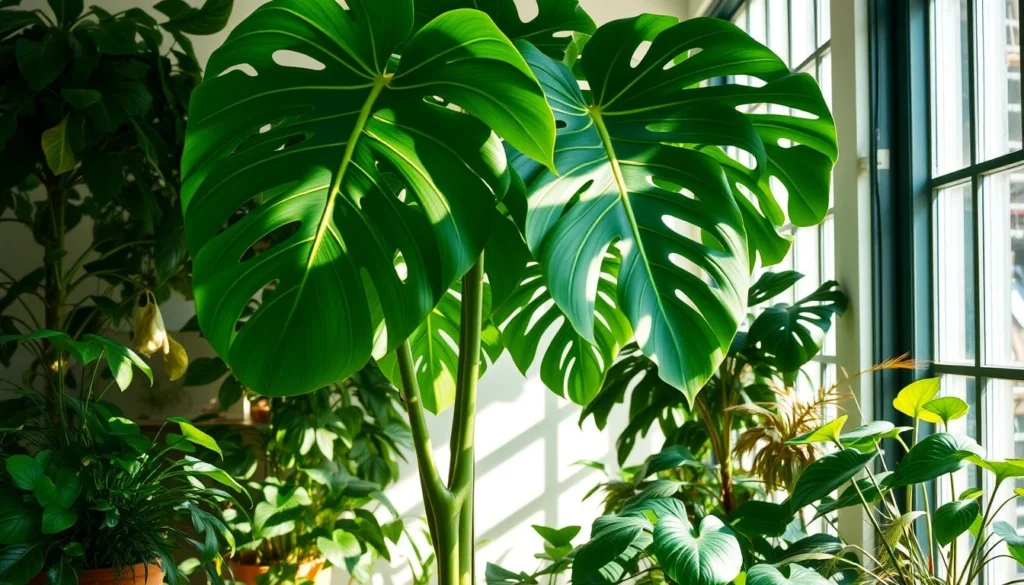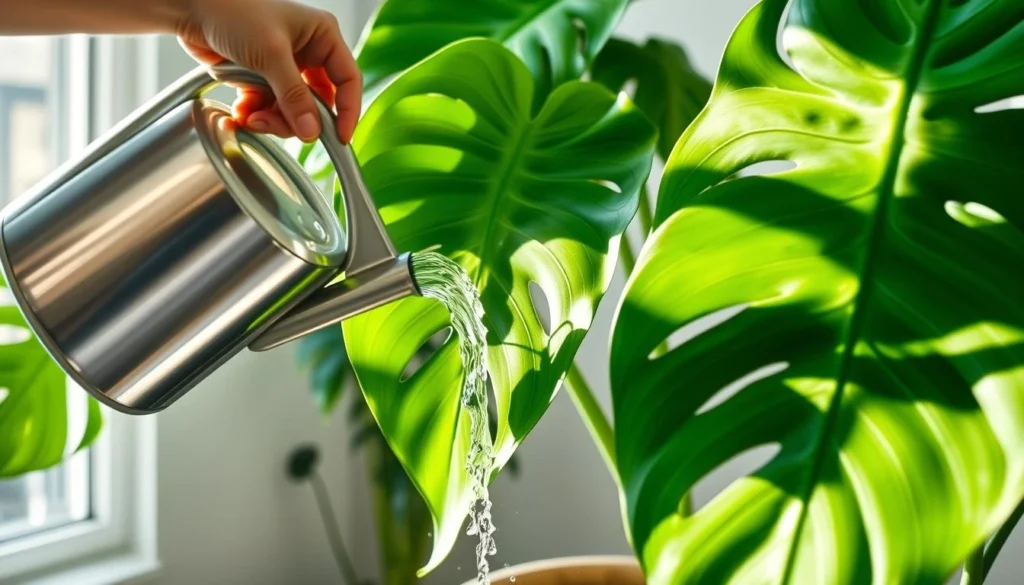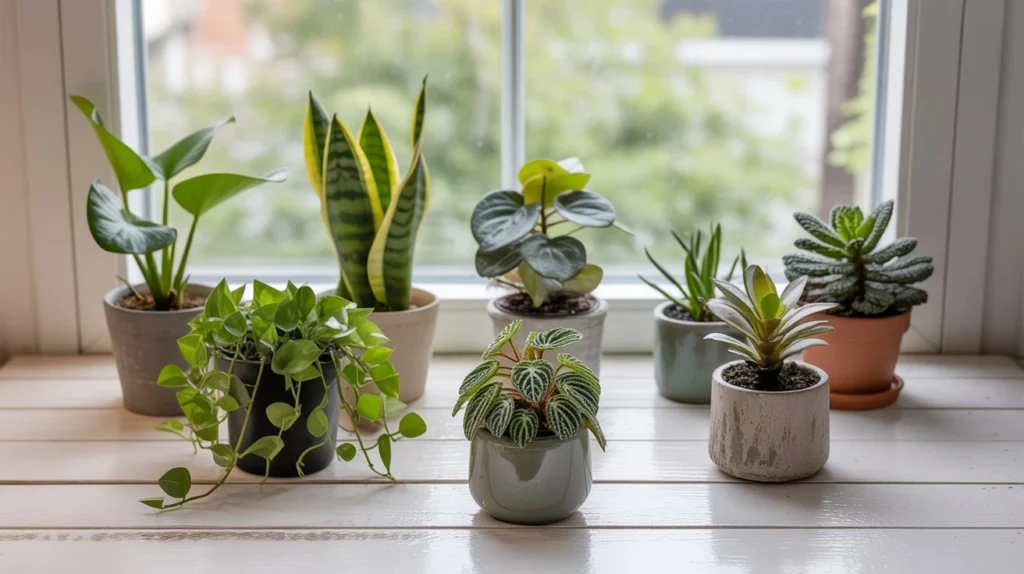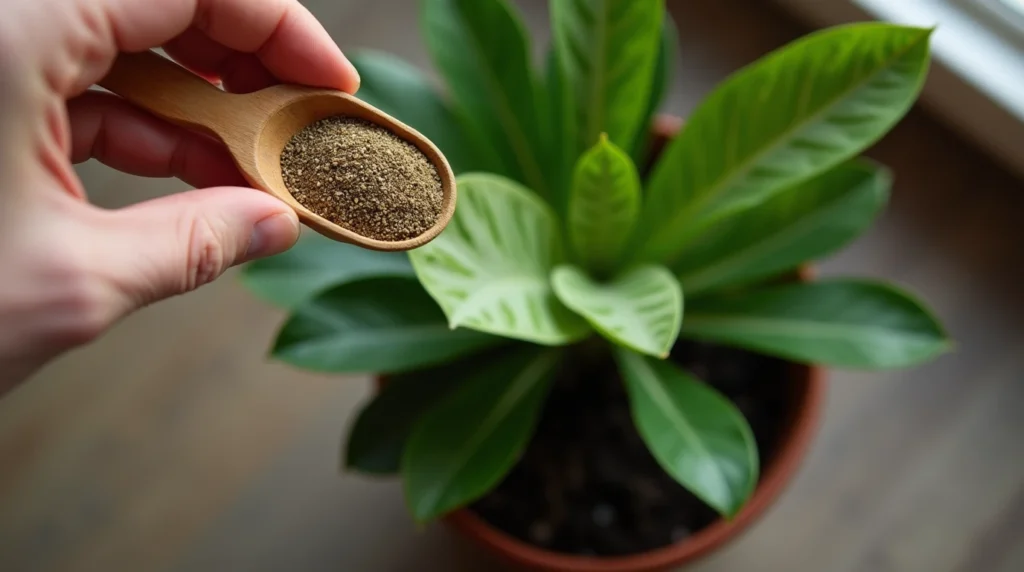
The Monstera Indoor Plant (Monstera deliciosa) is a favorite in many homes. Its glossy leaves and easy care make it a great choice for indoor spaces.
This houseplant is a hit in homes everywhere. It brings tropical beauty to any room. Plus, it’s easy to care for, perfect for those new to indoor gardening.
With a few simple care tips, your Monstera will thrive. Enjoy its stunning leaves for years.
Table of Contents
The Allure of Monstera Plants in Modern Homes
Monstera plants bring a touch of tropical elegance to homes. They are now a key part of modern indoor plant decor.
Origins and Natural Habitat
Monstera deliciosa comes from Central and South America’s tropical areas. They love humid places with filtered sunlight.
Why Monsteras Have Become Trendy Houseplants
Monstera plants stand out with their unique, fenestrated leaves. They grow well indoors with the right care, making them popular.
| Characteristics | Benefits |
|---|---|
| Unique Fenestrated Leaves | Adds a touch of tropical elegance to indoor spaces |
| Adaptability to Indoor Conditions | Makes them ideal for modern homes |
| Low Maintenance | Easy to care for, perfect for busy homeowners |
As trendy houseplants, Monstera plants are loved for their striking looks and easy care.
Understanding Your Monstera Indoor Plant
Knowing which Monstera species you have is key to caring for it. As a popular indoor plant, it’s important to understand your Monstera’s needs.
Different Monstera Varieties
Monstera plants vary in species, each with its own look. The Monstera deliciosa has big, shiny leaves. The Monstera adansonii has smaller, more delicate leaves. Knowing your plant’s type helps you care for it better.
Growth Patterns and Expectations
Monsteras are climbers that grow upwards. Indoors, they need support like trellises or stakes. They can get big, so pruning is important to keep them in check. Expect new leaves to grow, mostly during the growing season.
Recognizing a Healthy Monstera
A healthy Monstera has bright green leaves without damage. The leaves should be firm and have the special holes or fenestrations. Yellowing, drooping, or pests mean there’s a problem that needs fixing.
By knowing your Monstera’s type, growth, and health signs, you can give it the best care tips. This way, it will flourish as a stunning indoor plant.
Essential Light Requirements
Light is key for Monstera plants, affecting their health and growth. They like bright, indirect light but can handle medium light too.
Ideal Light Conditions
For your Monstera to thrive, give it bright, indirect light. Direct sunlight can burn leaves, and too little light slows growth.
- Place your Monstera near an east- or west-facing window for optimal light.
- Avoid direct sunlight, specially during peak hours.
- Consider using sheer curtains to filter the light if needed.
Signs of Too Much or Too Little Light
It’s important to watch how your Monstera reacts to light. Too much light can turn leaves yellow or scorched. Too little light makes them grow slow and stems stretchy.
| Light Condition | Signs | Action |
|---|---|---|
| Too Much Light | Yellowing or scorched leaves | Move to a shadier location |
| Too Little Light | Slow growth, leggy stems | Move to a brighter location |
Seasonal Light Adjustments
As seasons change, so does your home’s light. Moving your Monstera with the seasons helps keep it in the right light.
In winter, you might need to put your Monstera in a brighter spot. This is because days are shorter.
Watering Your Monstera Properly
To keep your Monstera thriving, understanding its watering needs is key. Monstera plants prefer slightly moist soil. It’s important to find the right balance.
Establishing a Watering Schedule
Creating a watering schedule depends on several factors. These include the size of your pot, the humidity of your environment, and the time of year. As a general rule, water your Monstera when the top inch of soil feels dry to the touch.
Humidity Requirements
Monsteras thrive in humid environments, typically between 50-60% relative humidity. To achieve this, you can use a humidifier. Or place the pot on a tray filled with water and pebbles.

Common Watering Mistakes to Avoid
Overwatering is a common mistake that can lead to root rot. Ensure good drainage and avoid letting the pot sit in water. Underwatering can also stress the plant, so it’s essential to find a balance.
By following these guidelines, you can provide your Monstera with the best care tips for optimal health and growth.
Soil, Potting, and Repotting Techniques
To keep your Monstera thriving, it’s key to know about soil, potting, and repotting. A well-cared-for Monstera not only boosts your indoor plant decor. It also turns into a stunning trendy houseplant that grabs attention.
Best Soil Composition for Monsteras
The perfect soil for Monstera plants drains well but holds moisture for growth. Mix peat moss, perlite, and pine bark for the best results. This mix ensures air gets to the roots and prevents waterlogged soil, which can cause root rot.
Choosing the Right Pot
Choosing the right pot for your Monstera is vital. The pot should be a bit bigger than the plant’s root ball and have holes for drainage. Terracotta pots are great because they let moisture evaporate and keep the soil healthy.
When and How to Repot
Monstera plants usually need a new pot every 1-2 years as they grow. Look for signs like roots coming out of the holes or packed soil. When it’s time to repot, carefully remove the plant, trim dead roots, and put it in a new pot with fresh, draining soil.
Monstera Indoor Plant Care and Maintenance
Keeping your Monstera healthy means paying attention to its needs. This includes fertilization, pruning, and support. By following these tips, you’ll get to enjoy the many benefits of having a Monstera at home.
Fertilizing Guidelines
Fertilize your Monstera during the growing season (spring and summer). Use a balanced, water-soluble fertilizer. But, dilute it to half the recommended strength to avoid harming the roots.
Pruning and Cleaning
Pruning keeps your Monstera looking good and encourages new growth. Remove dead or damaged leaves and cut back long stems. This will help it branch out. Also, clean the leaves with a damp cloth to keep them looking fresh.
Supporting Your Growing Monstera
Moss Poles and Trellises
A moss pole or trellis can help support your Monstera. These structures let the plant climb, just like in its natural habitat.
Training Your Plant to Climb
Use soft ties to gently attach the stems to the support. Trim any aerial roots not attached to it. This will help your Monstera grow upwards and thrive.
By following these best care tips, you can enjoy a thriving Monstera. It will bring beauty and freshness to your home.
Troubleshooting Common Monstera Problems
Fixing your Monstera indoor plant is easy if you know the signs. Common problems include pests, yellow leaves, and poor health.
Identifying and Treating Pests
Monstera plants can get pests like spider mites, mealybugs, and scale. Check your plant often and keep it separate if you see pests. Use insecticidal soap or neem oil to fight pests.
Dealing with Yellowing or Brown Leaves
Yellow or brown leaves mean your Monstera might be getting too much or too little water. Or it might be too hot or cold. Change how often you water and make sure it’s in a good spot.
| Issue | Cause | Solution |
|---|---|---|
| Yellowing Leaves | Overwatering | Reduce watering frequency |
| Brown Leaves | Underwatering | Increase watering frequency |
| Pests | Insect infestation | Treat with insecticidal soap or neem oil |
Reviving an Unhealthy Monstera
If your Monstera is not doing well, check its environment and care. Adjust the light, water, and food it gets. Cutting off bad leaves can help it grow better.
Propagation Methods for Monstera Plants
Monstera plants are easy to multiply using simple techniques. This lets you share your favorite trendy houseplants with others. It also helps you understand how your plant grows.
Stem Cutting Propagation
Stem cuttings are a common way to grow Monstera plants. Here’s how to do it:
- Choose a healthy stem with at least two nodes.
- Cut the stem just below a node with a clean tool.
- Take off lower leaves, keeping a few at the top.
- Put the cutting in water or a potting mix that drains well.
This method works because Monstera plants grow roots from their nodes easily.
Air Layering Technique
Air layering is great for Monstera plants with long stems. Here’s how to do it:
- Make a small cut in the stem.
- Wrap the area in moist sphagnum moss.
- Use plastic wrap to keep the moss moist.
- Wait for roots to grow before cutting the stem below them.
Air layering lets you grow a new plant while it’s attached to the mother plant. This reduces shock.

Caring for New Monstera Babies
After you’ve grown your Monstera, it needs the right care. Place it in a bright, indirect light spot. Keep the watering consistent. With good care, your new Monstera babies will do well, adding beauty to your indoor plant decor.
By using these methods and tips, you can enjoy more Monstera plants. You’ll learn how to propagate and grow your collection of trendy houseplants.
Read More :
Indoor Tomato Plant: A Guide to Cultivating Tasty Fruit
Conclusion: Enjoying Your Thriving Monstera
With the right care, your Monstera can become a beautiful part of your home. It brings many benefits. By following the best care tips from this article, you can enjoy its unique beauty.
Having a Monstera not only makes your home look better but also purifies the air. It adds a natural touch to your space. Knowing what your Monstera needs is key to its health and growth.
By using the right watering, fertilizing, and pruning techniques, your Monstera will flourish. Now, you can relax and enjoy the fruits of your labor. You’ll see the amazing benefits of having this incredible plant in your home.
FAQ
How often should I water my Monstera deliciosa?
Water your Monstera when the top inch of soil feels dry. This is usually once a week indoors.
What kind of light does a Monstera plant prefer?
Monsteras like bright, indirect light. They can handle low light too. But direct sunlight can burn their leaves. Use a curtain to filter the sun.
Why are the leaves of my Monstera turning yellow?
Yellow leaves might mean you’re watering too much or too little. Or maybe it’s getting too much sun. Check your watering and move it to a shadier spot.
How do I propagate a Monstera plant?
Propagate Monstera with stem cuttings or air layering. For cuttings, take a stem section with nodes, remove leaves, and plant it. For air layering, make a cut, wrap it in moss, and wait for roots.
What is the best soil composition for a Monstera?
Use a potting mix that drains well. A mix of peat moss, perlite, and vermiculite is good. It keeps moisture but prevents waterlogging.
Can I use a Monstera as a hanging plant?
Monstera can trail, but it’s better for climbing. Use a moss pole or trellis. Its aerial roots can climb, making it a great room feature.
How often should I fertilize my Monstera?
Fertilize with a balanced fertilizer in spring and summer. Use it once a month, diluted to half strength to avoid root burn.
Is Monstera toxic to pets?
Yes, Monstera contains calcium oxalate crystals that are toxic to pets. Keep it away from pets and kids to avoid harm.
How can I increase the humidity around my Monstera?
To boost humidity, put the pot on a water tray with pebbles. Use a humidifier or group plants together. This creates a humid microclimate.

